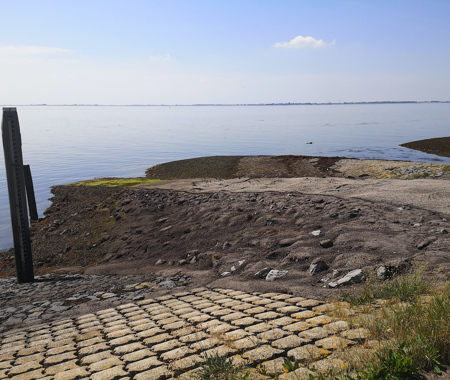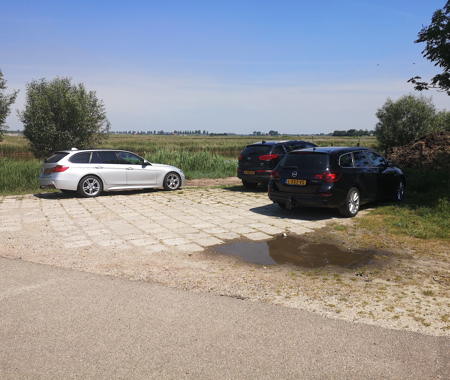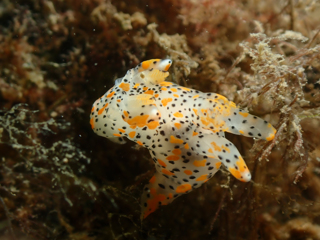DICKYS PLACE 79A
Nederland, Zeeland
Dicky's Place, also known as the Sluis or het Gemaal van Tholen, is known for its beautifully overgrown peat blocks. However, the walk from the parking lot to the entry point is long and you will have to swim out for quite a distance. The peat blocks start at a depth of 6 meters. These rather small blocks or walls are home to lot of small marine life. More at depth, at about 15 meters, lies an area with much larger peat blocks, overgrown with weeds and brick anemones.
Particulars
Dicky's Place can be reached from the shore. Follow the bike trail through the nature reserve past the bird hide and cross the dike a little further on the concrete stairs. You'll see a couple of dams and a boat ramp on your right. This is where you enter the water. Now swim straight ahead over the gradually sloping sandy bottom. Concentrate on the overgrown oyster beds and look carefully between the peat blocks, there are lobsters hiding in the holes and crevices.
Warnings
Don't dive at Dicky's Place when there are fishing boats around. Dicky's Place is located in a fishing area. Long walk from parking lot. Best visibility at low tide. Dicky's Place can only be reached through a nature reserve.
DICKYS PLACE Features
- Nicknames
- Gemaal van Tholen,De Sluis,l'Ecluse,t' Groene Huisje
- Address
- Kruising Platteweg, Zeedijk, Scherpenisse
- Parking
- Limited parking
- Distance
- 500 m.
- Suitable for
- Advanced divers
- Permit
- N.v.t. / NA
- Access
- Free access
- Facilities
- None
- Water
- Salt
- Tide
- LW en HW
- Kind of dive
- Shore dive
- Current
- Medium
- Visibility
- 1 - 5 m.
- Average visibility
- 2 m.
- Depth
- 20 m.
- Bottom
- veenblokken,zand,steenstort
- Life
- Plumose anemone, crab, lobster, eel, catfish
- Other recreation
- Biking, fishing , rambling
- Emergency
- 112
Current weather conditions
Spots nearby
.jpg) Vuilnisbelt poortvliet (1,33km)
Vuilnisbelt poortvliet (1,33km)
 Wrak den boer (2,10km)
Wrak den boer (2,10km)
.jpg) Strijenham (2,11km)
Strijenham (2,11km)
 Gorishoek de punt (2,42km)
Gorishoek de punt (2,42km)
 Slot lodijke (2,56km)
Slot lodijke (2,56km)
 Gorishoek de blokken (2,75km)
Gorishoek de blokken (2,75km)
 Strijenhaven (2,91km)
Strijenhaven (2,91km)
.jpg) Bergse diepsluis hangcultuur (4,11km)
Bergse diepsluis hangcultuur (4,11km)
.jpg) Bergse diepsluis oesterdam (4,31km)
Bergse diepsluis oesterdam (4,31km)
 Bergse diepsluis overkant (4,39km)
Bergse diepsluis overkant (4,39km)
 Wrak de ketel (6,01km)
Wrak de ketel (6,01km)
 Wemeldinge-oost linda (7,24km)
Wemeldinge-oost linda (7,24km)



.jpg)
.JPG)























